Septempranillo Day II Table Blending: Tempranillo from Old World to New World and Back Again
Just in case you were asleep under a rock this past week, September 1 was the 1st International Tempranillo Day (or as some called Septempranillo). From Samoa to San Francisco and from Spain to San Antonio, events were held in celebration and appreciation of all things Tempranillo. I tasted seven Tempranillos from Texas and California with Chef, Sommelier and Proprietor of Houston’s El Meson Restaurant (See: https://vintagetexas.com/?p=5353). It was an eye opening experience. I also tweeted with what seemed to be hundreds of other Tempranillo aficionados about our collective experience using the hashtag #TempranilloDay.
The following evening I had some friends over to the house to taste the same new-world (California and Texas) Tempranillos from my El Meson experience and to benchmark them to a Tempranillo-based wine from Ribera del Duero. It’s a region where wine has been made for thousands of years, but where viticulture arrived with Benedictine monks from the Burgundy region of France in the twelfth century.
Why did I choose Ribera del Duero for my Tempranillo benchmark? Well, because, this region has perhaps the strongest linkage to new world winemaking techniques in the Spanish Tempranillo homeland. The Ribera del Duero is located on the extensive, elevated northern plateau of the Iberian Peninsula. It occupies the southern plains of the province of Burgos, extends west into Valladolid and includes parts of Segovia and Soria provinces to the south and east. Geologically, tertiary sediments, consisting of gently lenticular layers of silty or clayey sand, alternate with layers of limestone, marl and chalky concretions. This region has moderate to low rainfall and is exposed to quite extreme climatic conditions; long, dry summers with temperatures up to 40 C are followed by hard winters. [Sounds kind of like Texas, doesn’t it, particularly our central Edwards plateau and high plains near Lubbock.] Therefore, it makes it a great place to start to understand the our new-world Texas Tempranillos.
As I opened and poured the 2008 Bodegas Barco de Piedra (from Ribera del Duero) it was a deeply extracted wine with near black-red color. Their expression of Tempranillo (also known locally as Tinto del Pais) was in a style that brings a fresher qualities to the wine by using short wood aging schedules and in this case only for 5 months in French (85%) and American (15%) oak. Black cherry and blueberry were the main aroma and flavor components assisted by earth, herbs, cedar and white pepper producing a thick, rich and well-balanced wine.
We followed this by sampling several Spanish tapas and discussed our tasting list and tasks for the evening.
The tasting list included:
Haak Vineyards Tempranillo 2008, Reddy Vineyard (13% Alc. $14.95, Texas High Plains)
Coral Mustang Tempranillo 2005, Vista Creek Vineyard (14.5% Alc. $24, Paso Robles, California)
Pedernales Cellars Reserve Tempranillo 2009 (13.4% Alc. $29, Texas)
Sandstone Cellars IX 2009 (75% Tempranillo-25%Touriga Nacional, 13% Alc. $30, Mason County Texas)
Twisted Oak “The Spaniard” 2007 (64% Tempranillo-20%Graciano-16%Grenach, 14.4% Alc. $49, Calaveras County, California)
Irwin Family Vineyards Tempranillo 2008 (14.8% Alc. $25, Sierra Foothills, California)
Yorba Tempranillo 2007 Amador County (95% Tempranillo-5% Graciano (14.9% Alc. $38, Sierra Foothills, California)
I knew from my prior day’s tasting that we had a full range of new world Tempranillo experiences at hand. For example, the Haak Tempranillo yielded a youthful, simple and easy-drinking wine. Coral Mustang had deep and complexity of an old Bordeaux wine having a French oak barrel treatment and years of bottle age. Pedernales Cellars showed crisp, red fruit domination, while Twisted Oak yielded a highly aromatic notes aided by blending with Graciano. Sandstone Cellars Tempranillo/Tourgia blend disclosed dark blueberry and firm tannins, and Irwin Family Vineyard and Yorba gave a performance of Tempranillo in the style and power of California’s noted big, “late harvest” Red Zins.
Of the seven civilian tasters, Jim, Bill, Bitsy, Nora and Delia seemed like each had tasted a favorite Tempranillo. The one that didn’t (Lillian) due to an aversion to tannins, preferred to stay safely under the spell of a California Pinot Blanc. But, that’s OK, she knows what wines she likes and (more importantly) knows what wines like her. I played the role of facilitator and blend master.
Time to Table Blend
As you may know most of the blending of wines takes place in the winery during the winemaking operation using separate lots of wine. However, at times, a vineyard will harvest its grapes involving several grape varieties (usually originating from a particular region like Bordeaux or The Rhone Valley) and take them to the winery to be crushed together and fermented into a single wine. This is called field blending. Through the years, I have used the phrase, table blending, for the process involving opening several bottles of wine, in this case Tempranillo, and trying to blend them together right at the table to produce an even better blended wine….sometimes successfully, and at other times not.
The tasks for the tasters at my Tempranillo tasting were to (a) taste all of the Tempranillos and (b) give me blending recommendations for me to use to produce a “table blend”. My instructions to them was that it had to result in a combination of the Texas and California Tempranillo-based wines before us that would best produce the sensory equivalent of the Barco de Piedra wine from Ribera del Duero. As we tasted, we made mental notes and comparisons with the other wines and tried to verbalize the identification of the components of Barco de Piedra. They included:
- Deep extraction that accentuated dark fruit flavors and aroma (particularly black cherry and blueberry) overlaid with a hint of redfruit.
- A firm but pleasant tannic character highlighted by some skin tannin.
- An earthy quality near that of freshly picked forest mushrooms
- Despite the depth and darkness of the fruit and olfactory sensations, the wine still had a zippy crispness gained from its acidity
- All this was carried by the wine’s moderate alcohol level (13.5%)
The tasters readily identified the notes from our Texas and California Tempranillo palette of wines (different from wine tasting palate). The alcohol content on the Texas Tempranillo indicated that they were the closest match to the Barco de Piedra and were needed to be there in the base blend. So, our table blend started with the Pedernales Cellars Tempranillo for crisp acidity and its red fruit. Upon this, the Sandstone Cellar was added to the blend in nearly equal portion to the Pedernales Cellars wine. This brought the dark fruit (particularly blueberry) and tannins while still keeping the alcohol a match for the wine from Ribera del Duero.
However, something was missing in the blend. Finally, a suggestion was made (by Nora) that our blend needed a component of earth and mushroom which she reckoned could be gained from the Coral Mustang Tempranillo. The proportion, if I recall correctly was about half what we used for the first two wines. Therefore, our table blended “Ribera del Duero” Tempranillo wine was composed roughly of:
- 40 percent Pedernales Cellars
- 40 percent Sandstone Cellars
- 20 percent Coral Mustang
The alcohol of the blend consisting of two parts of two Texas wine and one part California wine was pretty close to the 13.5 percent stated on the Bodegas Barco de Piedra bottle. Side-by-side, the two wines matched perfectly in terms of color and intensity. The aromas, body and mouth feel were also a match.
Some may say, “Why bother doing this whole table blending nonsense, anyway? Well, it’s basically an exercise, and an exercise with purpose….it’s fun and educational, not a bad combo. The process makes one use his/her senses to evaluate a wine, deconstruct it, and then reconstruct it from the component parts identified in totally separate wines. In this case, the reconstruction was produced from the Tempranillos grown in Texas and California, half the world away from Spain, but with a common enological ancestry and heritage. Great fun!
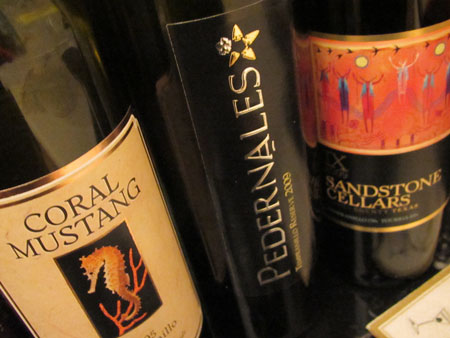
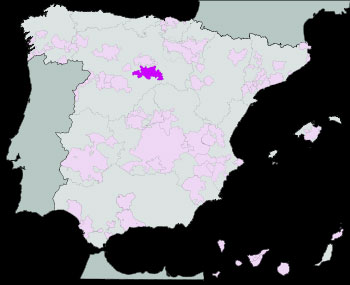

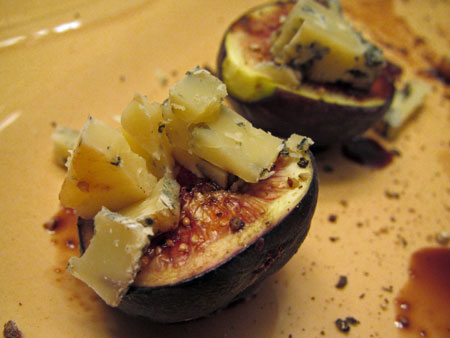
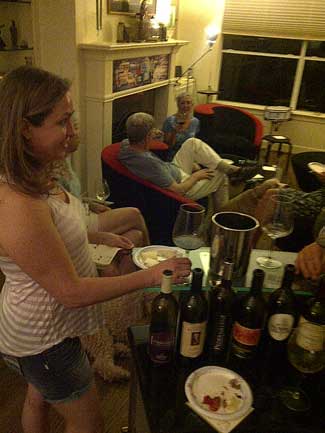
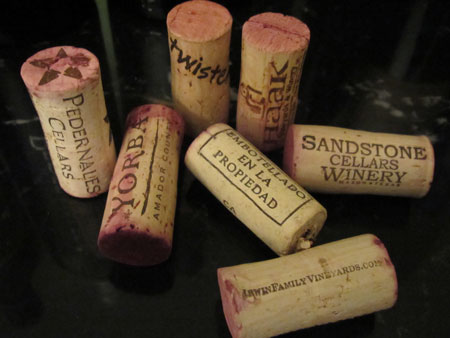

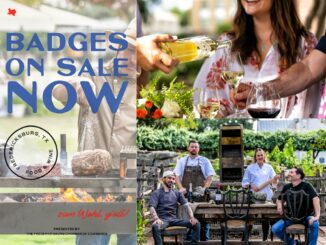
I can’t believe you didn’t include my favorite from Texas- Inwood Estates!